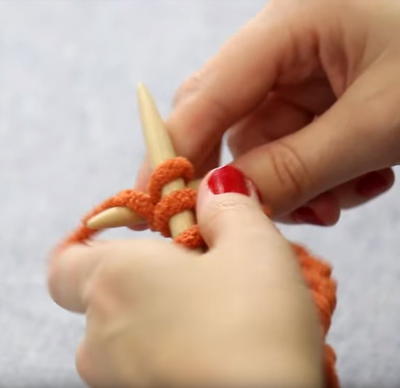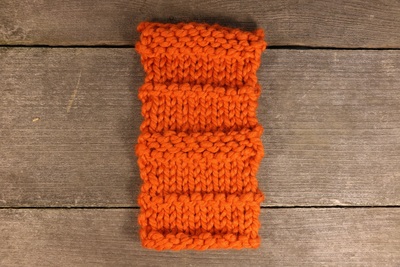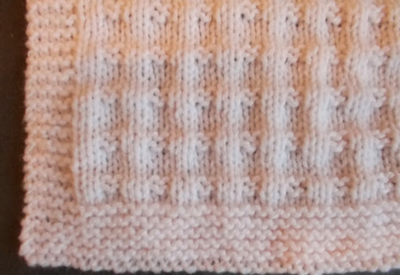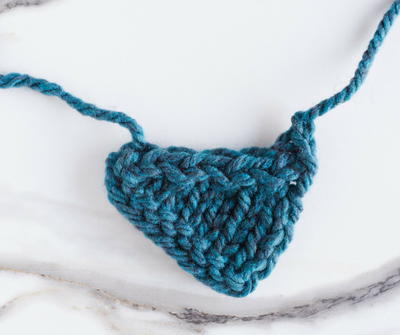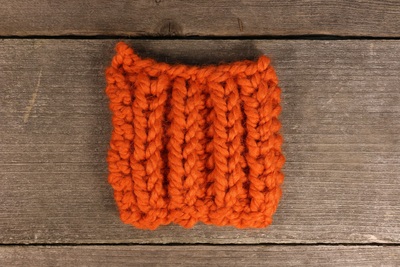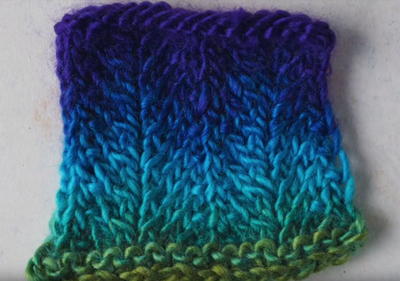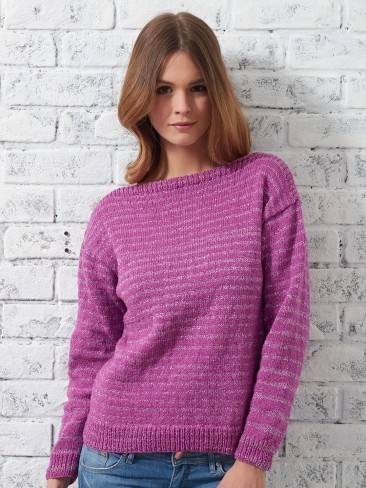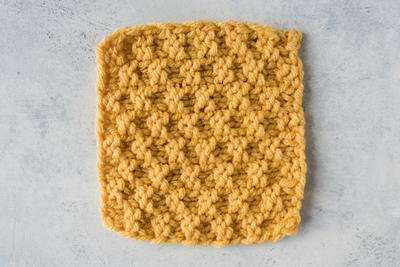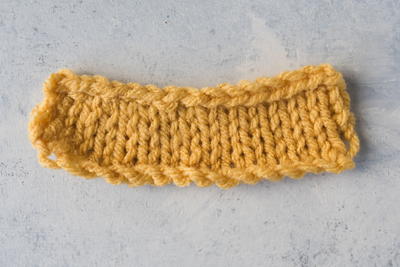How to Do Continental Knitting (Eastern Method)
Also called European knitting or German knitting, this style is a great alternative to English knitting and might even help you knit faster!
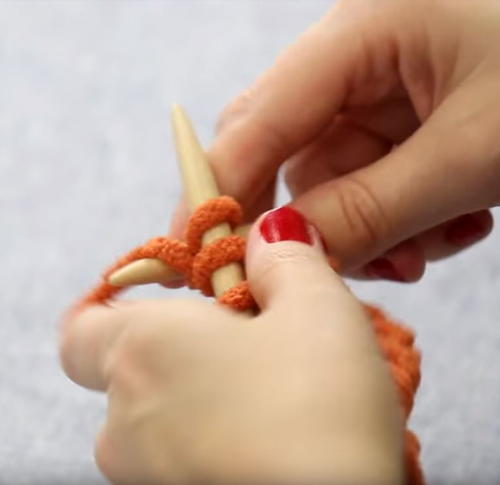
You might be familiar with the different knitting styles, but if you aren't, continental knitting (also called European knitting) is one of the most popular methods. Usually considered the "opposite" of English style, continental knitting is unique because of how the yarn is held in the non-dominant hand.
Important Note: This video demonstrates Eastern method continental knitting. The Western and combination methods of knitting do continental knitting the same way but with the stitch loops twisted the other way with the leading leg in front.
Sometimes this style of knitting is called "picking" because the motion used to wrap the yarn around the needle almost makes it look like you're picking up the yarn with the needle. This is a great technique to have in your knitting repertoire. It might be a little tricky to master at first, but once you practice, you might even find that your knitting speed will improve.
Why will it make you knit faster? In this method, because you hold the yarn in your left hand instead of your right, you have fewer movements to make in order to create a knit or purl stitch. There is no switching the yarn from front to back in order to change between knitting and purling; instead, the yarn will either be above or below the needle in your non-dominant hand. This means you'll be able to create the same stitches you have been previously (knit and purl) using much faster and more subtle movements.
Your Recently Viewed Projects
joanscoggin7771 44 68672
Jan 22, 2019
Well, here's the thing, and I did check it out in POK by Hiatt continental or english refers to the hand which throws the yarn, left or right (or non dominant), western or eastern refers to which way the stitch faces when completed (stitch mount), left or right, and you can add in to your description whether you knit ambidextrously or if you purl. So, if I were to describe how I knit, it's continental (throw) eastern (stitch mount) ambidextrous.
stephbmgkrgr 70592 39
Jul 23, 2014
I do not know which way is right is the right way or wrong way the continental way or European or conventional way of knitting as I am still beginning I have been having some trouble with getting my work to be straight also I believe it had to be with my tension I noticed that when I started knitting this way it forced me to keep the tension on my yarn even and it feels as if once I get used to it it will be faster as well I believe that if it feels right to a person there should not be any right or wrong way to do something Nobody criticizes you on which foot you start walking with do they Is anybody going to refuse your gift of a scarf because you knit it backwards Could you really even tell I don't think so Thank you for…Read More the tutorial it really helped me blessings to all
mrmont 7229899
Jun 10, 2014
This is the best demonstration of Continental knitting that I have ever seen. It is all about the stitches on the needle. They are on different legged from what you are used to. This means that when she knits into the back of the stitch it does not twist as it normally does. I had to get out my knitting to really see what she was doing, and try it. That cleared it up for me. Whether Continental knitting is faster than how I knit I don't think so as I hold my needles differently than anyone else I have seen.
Jabberwocky646
Jun 09, 2014
? This is not wrong. I know 2 European born knitters who knit into the back of the stitch just like this and one who knits into the front and an American who knits into the front. They all call their method continental. I guess it depends which continent you come from and how you go into the stitch which makes your way of continental knitting the right way - which determines your right to tell others their way is wrong :-) ! Both ways are right
naomiaplus 0844243
Jun 07, 2014
The direction of the wind of wool when picking up new stitches makes the difference between knitting in the front or in the back of a stitch. I have found that I use this demonstrated directionality when knooking and I have found it is much faster than what is taught in the knooking directions. I am a lefty that knits right handed - and I look very awkward. I am yet to try this with regular knitting needles but I feel it may be much easier for me than how I currently knit.
zsoka313 8238200
Jan 24, 2012
Sorry Ladies, who have negative comments, but this is the correct way to knit Continental way. I just finished a baby cardigan with this method.It is pure PERFECTION
mimi25
Jan 11, 2012
this is so wrong in so many ways! RH knitters DO NO knit in the back of the stitch as shown....NEVER. and the Continental I learned was done in the front too. this video is a disservice to those wishing to learn the Continental method correctly.
jepp98
Jan 04, 2012
This is NOT European knitting! Another major error she made was calling the yarn in the right hand Conventional knitting. There is European and Continental, not conventional! Every knit stitch, whether European or Continental, is done through the front of the loop not the back. This video should be removed!
joycemar 5936105
Jan 03, 2012
I am wondering if, in this method, the knit stitches are always knitted into the back? If so, if a pattern states to knit into the back of a stitch, how it would be different?
jepp98
Jan 04, 2012
This video is wrong. She is doing knit to the back loop. Knitting, whether European or Continental, is done from left to right through the front of the stitch.
laurasirajimenez 5 655085
Nov 20, 2011
I want to thank you for making this video. My Grandmother, taught me how to knit, then later in life my Mother has increased my knitting knowledge; both born and raised in South America. As I seek tips from others I find myself confused by the techniques used, thinking I was doing my knitting wrong I went back to the start on how to knit when I came across your video.Little did I know that my knitting style is European, I find it easier and comforting...thanks for clarifying this for me, now I can go on confident that my knitting is not wrong. Laura -
jepp98
Jan 04, 2012
This video is showing how to hold the yarn properly for European knitting but the stitch she is doing is not a knit stitch. She is doing knit through the back of the stitch or back loop.
tetleys4t 8461043
Oct 24, 2011
Knitting and purling through the front loop is the correct way to knit whether you knit Continental European style or the English throw style This is because all knitting patterns assume that this is how you knit and this becomes evident when doing more complicated knitting patterns that specifically call for knitting to be done THROUGH THE BACK LOOPS It also makes a difference when making yarn overs as to which way you wrap the yarn around the needle When making the knitting stitch and the purling stitch you must wrap the yarn either clockwise in both cases or counterclockwise in both cases You do not change directions I do not understand why you are making the knitting stitches so complicated and misleading the knitters who are just learning You do them a big disservice when they go on to do more complicated pattern stitching Shame on you Sorry for being…Read More a straight talker but it does need to be said There are many knitters who would have been willing to make videos for you showing the correct way to knit Check out Elizabeth Zimmermann's book called the Knitting Workshop She even states that the way you demonstrated the knitting purling is WRONG
lg312
Aug 14, 2011
You are knitting through the back loop. [Ktbl] This is not the correct way to knit period whether it be European or Continental style.
Julie
Jun 01, 2011
I used to knit like this also. as long as you go from the top of the stitch down and "scoop" the yarn, much like crocheting, your stitches do not get twisted. This is a very fast way to knit if you are just making a straight purl knit pattern. However, it becomes more complicated to get the stitches to look right as you get into more complicated patterns that knit together, cable, etc. I have now converted to the true continental pattern and find this also very fast.
JessiCAN
May 31, 2011
@capfelbaum: I completely understand your confusion with the method shown in this video. I learned how to knit the same way you did, through the front loop. However, I have watched the whole video, and I realized that Emi is not twisting her stitches by knitting through the back loop. If you watch her as she purls, you will see that she wraps her yarn around the needle the opposite way from what many of us are used to. The result is that her stitches sit backwards on the needle when she goes to knit. Watch as she does her knit row, and you will see that her stitches turn to the right rather than to the left, as many of us are used to. This is simply another variation on the European or Continental style of knitting. Hope this helps! -- Editor of AllFreeKnitting
capfelbaum
May 31, 2011
Why are you teaching the european method using through the back loop? The correct knitting method is to go through the front loop, which will cause your purl stitch (as shown) to be twisted. You must change your purl stitch also. When using knitting through the back loop it creates a problem when you have a pattern calling for through the back loop (TBL).
seiercyn
May 28, 2011
I am a beginning knitter who has tried to "get" knitting off and on for many years. I have tried the conventional method (more than once) and found it frustrating. I like the long tail cast on method, and I love the European or Continental method of knitting! I have found a couple of ways to knit Continental style but particularly like the way Emi does hers. Thanks Emi Harrington for posting this video. It may not be for everyone, but it works so well for me!
lenncisneros 03939 72
May 21, 2011
Seemed to akward and don't see how it would be quidker or more efficient to knit. The first two stitches were kind of sloppy. However, if it works for some, it works. I learned differently so I will stick to that.
Report Inappropriate Comment
Are you sure you would like to report this comment? It will be flagged for our moderators to take action.
Thank you for taking the time to improve the content on our site.

